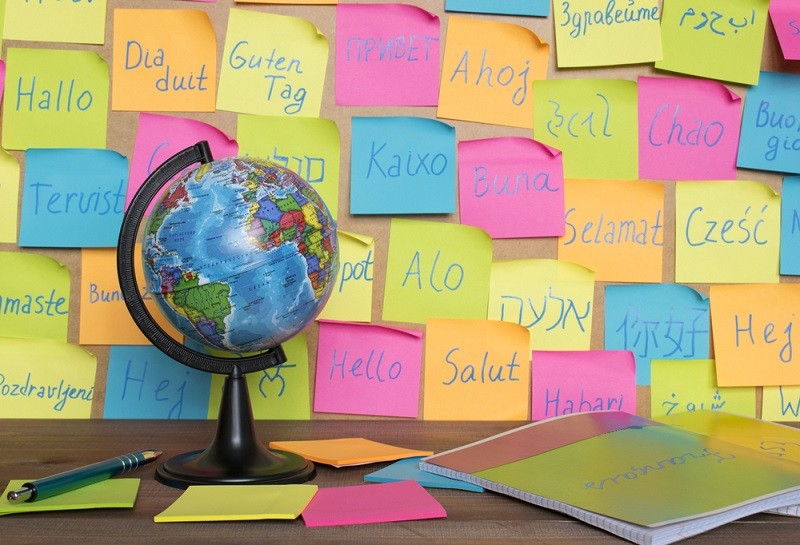Popular Reads
Top Results
Can't find what you're looking for?
View all search resultsPopular Reads
Top Results
Can't find what you're looking for?
View all search resultsWhat is love? It depends on what language you speak
Change text size
Gift Premium Articles
to Anyone
 Researchers from the University of North Carolina at Chapel Hill and the Max Planck Institute for the Science of Human History have used a new tool in comparative linguistics to examine emotional concepts across the world, finding the way we think of things such as anger, fear, and joy depends on our language. (Shutterstock/favorita1987)
Researchers from the University of North Carolina at Chapel Hill and the Max Planck Institute for the Science of Human History have used a new tool in comparative linguistics to examine emotional concepts across the world, finding the way we think of things such as anger, fear, and joy depends on our language. (Shutterstock/favorita1987)
T
he English word "love" can be translated as "sevgi" in Turkish and "szerelem" in Hungarian -- but does the concept carry the same meaning for speakers of all three tongues?
Researchers from the University of North Carolina at Chapel Hill and the Max Planck Institute for the Science of Human History have used a new tool in comparative linguistics to examine emotional concepts across the world, finding the way we think of things such as anger, fear, and joy depends on our language.
Their paper drew on data from nearly 2,500 languages, from large ones with millions of speakers to small ones with thousands, and was published in the journal Science on Thursday.
Sometimes, words used to describe emotions are so unique, it seems they are rooted exclusively in a particular culture. The German word "Sehnsucht", referring to a strong desire for an alternative life, has no translation in English.
Nor does the word "awumbuk", used by the Baining people of Papua New Guinea to describe feelings of listlessness that hosts feel after their guests leave.
But many other emotional states are named across the world's languages, leading scientists to wonder how close their meaning really is.
To approach the question, the team relied on "colexified" words, which refers to when a word has more than one meaning and the different meanings are seen by speakers of that language as conceptually similar.
For example, the English word "funny" can mean both humorous and odd, and humor is often found in things that are odd. In Russian, the word "ruka" is used for both the hand and the arm, in Japanese, "ki" can mean both tree and wood, and in French, "femme" means both woman and wife.
The researchers constructed networks of colexified emotional concepts and compared them across languages and language families, finding the words varied greatly in their nuance even if their meaning was equated in translation dictionaries.
In Austronesian languages, for example, "surprise" was closely associated with "fear", whereas in the Tai-Kadai languages of southeast Asia and southern China, "surprise" was linked to the concepts of "hope" and "want".
"Anxiety" was closely related to "anger" among Indo-European languages, but was linked more to "grief" and "regret" among Austroasiatic languages, while the concept of "pride" likewise correlated to positive or negative emotions depending on culture.
Read also: Wonder what 'ambyar' or 'julid' mean? Indonesian dictionary has defined them for you
Primary emotions hardwired
"Not every language family seems to see emotion in the same way as the other, and that's a really important finding on such a large scale," Kristen Lindquist, a psychology and neuroscience associate professor at UNC-Chapel Hill and the paper's senior author, told AFP.
The analysis found that those language families with similar colexifications were close in geographic proximity, suggesting the variation could be tied to patterns of trade, conquest and migration.
Yet there were some universal findings too: all languages distinguished emotions based on whether they are pleasant or unpleasant to experience, and whether they involve low or high levels of arousal.
Few languages equated the low-arousal emotion of sadness with the high-arousal emotion of anger, and few viewed the pleasant emotion of "happy" as similar to the unpleasant emotion of "regret".
That supports the idea that certain primary emotions are hardwired into mammalian brains, which humans have added to over millennia through new experiences that they have gone on to name.
"There are the basic building blocks of emotion, but humans have been scaffolding on these building blocks for thousands of years within our cultures," Joshua Jackson, a doctoral student at UNC-Chapel Hill and the lead author, told AFP.
"The way that we've named emotions, the way we communicate emotions, has been an important part of that process and that's why we have so much diversity in how we express emotions today."










